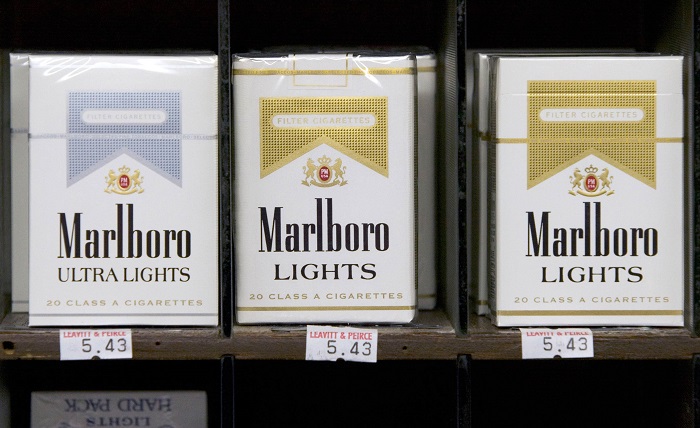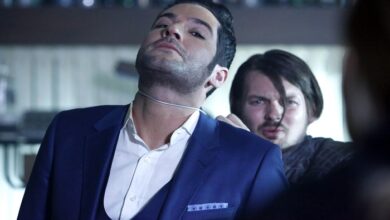Marlboro Ultra Lights: A Low-Tar Cigarette with a Controversial History

Introduction
Marlboro Ultra Lights are a brand of cigarettes produced by Philip Morris USA, a subsidiary of Altria Group. They are marketed as a low-tar and low-nicotine alternative to regular Marlboro cigarettes, with a white filter and a silver band on the packaging. They are also known as Marlboro Silver in some markets.
Marlboro Ultra Lights were introduced in 1988 as part of the Marlboro family of cigarettes, which includes Marlboro Red, Marlboro Lights, Marlboro Menthol, and Marlboro 100s. They were designed to appeal to smokers who wanted to reduce their exposure to tar and nicotine, while still enjoying the flavor and satisfaction of Marlboro cigarettes.
However, Marlboro Ultra Lights have also been the subject of controversy and criticism, as they have been accused of misleading consumers about their health risks, manipulating their nicotine delivery, and targeting young and female smokers. In this article, we will explore the history, the characteristics, the marketing, and the impact of Marlboro Ultra Lights as a low-tar cigarette with a controversial history.
History
Marlboro Ultra Lights were launched in 1988 by Philip Morris USA, as part of its strategy to expand its market share and compete with other low-tar brands, such as Winston Lights and Camel Lights. The company conducted extensive research and testing to develop the product, which involved various aspects, such as pack design, cigarette composition, filter technology, and advertising.
According to a document from Stanford University, the company explored different pack colors and designs for Marlboro Ultra Lights, such as red, blue, gold, and silver. The company eventually chose silver as the dominant color for the pack, as it was seen as consistent with an ultra light product and attention-getting among consumers. The company also added a blue outline to the pack to differentiate it from other Marlboro products.
The company also experimented with different cigarette formulations and filter technologies for Marlboro Ultra Lights, such as charcoal filters, recessed filters, perforated filters, and ventilated filters. The company aimed to create a cigarette that would deliver lower levels of tar and nicotine than regular Marlboro cigarettes, while still providing a satisfying taste and draw. The company also used additives and flavorings to enhance the flavor and aroma of the cigarette.
The company also tested different advertising concepts and messages for Marlboro Ultra Lights, such as “Cooler than ever”, “The coolest ultra lights ever”, “The smoothest ultra lights ever”, and “The ultimate in smoothness”. The company wanted to communicate the benefits of the product in terms of coolness, smoothness, relaxation, and satisfaction. The company also used the traditional Marlboro imagery of ruggedness and independence in its ads.
Marlboro Ultra Lights were initially successful in attracting smokers who wanted to switch to a lower-tar cigarette or who wanted to try a new product from Marlboro. The product also received positive feedback from consumers who liked its pack design, its white filter tip, its flavor, and its smoothness. However, the product also faced some challenges and criticisms from various sources.
Characteristics
Marlboro Ultra Lights are characterized by their low-tar and low-nicotine content compared to regular Marlboro cigarettes. According to this page, a pack of Marlboro Ultra Lights contains 10 packs of 20 cigarettes each. Each cigarette has a length of 100 mm (3.9 inches) and a diameter of 7.8 mm (0.31 inches). Each cigarette has a white filter tip with a silver band that has the word “Marlboro” printed on it.
According to this page, each cigarette delivers 4 mg of tar and 0.4 mg of nicotine when smoked according to the Federal Trade Commission (FTC) method. This method measures the amount of tar and nicotine in the smoke that is collected by a smoking machine that takes standardized puffs. However, this method does not reflect how smokers actually smoke cigarettes in real life.
According to [this page], each cigarette delivers 7 mg of tar and 0.6 mg of nicotine when smoked according to the International Organization for Standardization (ISO) method. This method measures the amount of tar and nicotine in the smoke that is collected by a smoking machine that takes more realistic puffs. However, this method does not account for the variations in smoking behavior among individual smokers.
According to [this page], each cigarette delivers 11 mg of tar and 1 mg of nicotine when smoked according to the Canadian Intense (CI) method. This method measures the amount of tar and nicotine in the smoke that is collected by a smoking machine that takes more intense puffs. This method is intended to mimic the smoking behavior of smokers who compensate for the lower yield of low-tar cigarettes by inhaling more deeply, taking more puffs, or blocking the ventilation holes on the filter.
As these methods show, the actual amount of tar and nicotine delivered by Marlboro Ultra Lights can vary significantly depending on how they are smoked. Therefore, smokers should not rely on the numbers on the pack to assess the health risks of smoking Marlboro Ultra Lights.
Marketing
Marlboro Ultra Lights are marketed as a low-tar and low-nicotine alternative to regular Marlboro cigarettes, with a white filter and a silver band on the packaging. They are also known as Marlboro Silver in some markets. The product is sold in various countries around the world, such as the United States, Canada, Australia, Japan, and Germany.
Marlboro Ultra Lights are advertised using various media, such as television, radio, print, billboards, and online. The ads feature the traditional Marlboro imagery of ruggedness and independence, such as cowboys, horses, mountains, and deserts. The ads also emphasize the benefits of the product in terms of coolness, smoothness, relaxation, and satisfaction.
However, Marlboro Ultra Lights have also been criticized for their marketing practices, as they have been accused of misleading consumers about their health risks, manipulating their nicotine delivery, and targeting young and female smokers. Some examples of these criticisms are:
- Misleading consumers about health risks: Marlboro Ultra Lights have been sued by several states and individuals for violating consumer protection laws and false advertising laws. The plaintiffs claimed that Marlboro Ultra Lights deceived consumers into believing that they were safer and healthier than regular cigarettes, when in fact they were not. The plaintiffs also claimed that Marlboro Ultra Lights did not deliver the advertised levels of tar and nicotine, as smokers compensated for the lower yield by changing their smoking behavior.
- Manipulating nicotine delivery: Marlboro Ultra Lights have been investigated by several agencies and organizations for manipulating their nicotine delivery. The investigators found that Marlboro Ultra Lights used various techniques to increase the nicotine delivery of their cigarettes, such as adding ammonia to enhance the absorption of nicotine in the lungs, adding additives and flavorings to mask the harshness of nicotine, and using ventilated filters to dilute the smoke with air.
- Targeting young and female smokers: Marlboro Ultra Lights have been criticized by several groups and activists for targeting young and female smokers. The critics argued that Marlboro Ultra Lights used appealing pack designs, attractive colors, feminine images, and suggestive messages to lure young and female smokers. The critics also argued that Marlboro Ultra Lights exploited the concerns and desires of young and female smokers for weight control, social acceptance, and self-image.
Impact
Marlboro Ultra Lights have had a significant impact on the tobacco industry and the society at large. They have influenced the development and innovation of other low-tar cigarettes from other brands and companies. They have also contributed to the revenues and profits of Philip Morris USA and Altria Group. They have also affected the health and behavior of millions of smokers around the world.
However, Marlboro Ultra Lights have also had a negative impact on the tobacco industry and the society at large. They have faced legal challenges and regulatory actions from various authorities and entities. They have also faced social backlash and ethical questions from various groups and individuals. They have also harmed the health and well-being of millions of smokers around the world.
Conclusion
Marlboro Ultra Lights are a brand of cigarettes produced by Philip Morris USA that offer a low-tar and low-nicotine alternative to regular Marlboro cigarettes. They were introduced in 1988 as part of the Marlboro family of cigarettes. They are characterized by their white filter tip with a silver band on the packaging. They are marketed using the traditional Marlboro imagery of ruggedness and independence, as well as emphasizing their coolness, smoothness, relaxation, and satisfaction.
However, Marlboro Ultra Lights have also been controversial since their inception. They have been accused of misleading consumers about their health risks, manipulating their nicotine delivery, and targeting young and female smokers. They have also faced legal challenges, regulatory actions, social backlash, and ethical questions from various sources.





